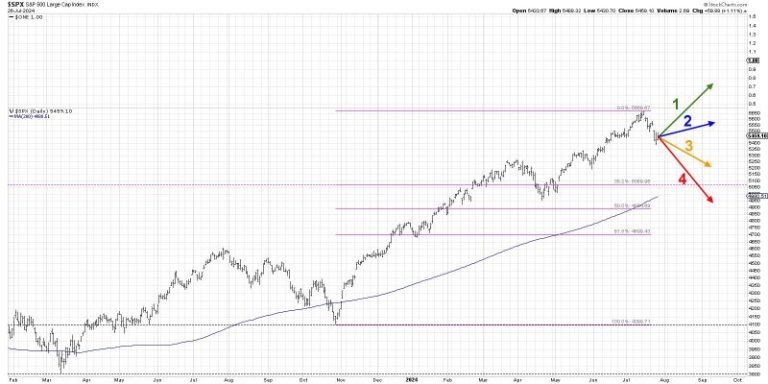The S&P 500 Index, the benchmark index for the U.S. stock market, has garnered significant attention in recent times as investors eagerly anticipate whether or not it will break the 5000 mark by September. The index’s performance is a key indicator of the overall health of the stock market and the economy at large. As we delve into the factors that may impact the S&P 500’s journey towards the historic milestone, various perspectives and analyses shed light on the possibilities that lie ahead.
One of the primary factors that could drive the S&P 500 towards the 5000 level is the continued economic recovery from the COVID-19 pandemic. With vaccination efforts gaining momentum and restrictions easing in many parts of the world, businesses are gradually returning to normal operations. This resurgence in economic activity may fuel corporate earnings growth, which is a crucial driver of stock prices. Positive earnings reports could act as a tailwind for the S&P 500, potentially pushing it closer to the 5000 mark.
Another pivotal element in the index’s trajectory is the Federal Reserve’s monetary policy stance. The central bank plays a significant role in shaping market sentiment through its decisions on interest rates and asset purchases. The Fed’s commitment to maintaining an accommodative monetary policy has been a key support for the stock market during the pandemic. Should the Fed continue to signal its dovish stance in the upcoming months, investors may find more reasons to remain optimistic about the S&P 500’s prospects of reaching 5000.
Geopolitical events and macroeconomic data releases also have the potential to sway market sentiment and influence the S&P 500’s movements. Factors such as trade tensions, inflationary pressures, and geopolitical conflicts can introduce volatility into the market, impacting investor confidence and risk appetite. Keeping a close eye on these developments and their implications for the global economy will be crucial in assessing the index’s chances of breaking the 5000 barrier by September.
Additionally, market technicals and sentiment indicators can offer valuable insights into the S&P 500’s short-term direction. Analysts often analyze charts, support levels, and trading volumes to gauge the index’s strength and momentum. Sentiment indicators, such as the put-call ratio and investor surveys, can provide clues about market participants’ optimism or pessimism. By combining fundamental analysis with technical and sentiment analysis, investors can gain a more comprehensive understanding of the S&P 500’s potential path towards 5000.
In conclusion, the journey towards the S&P 500 breaking the 5000 level by September is influenced by a myriad of factors, including economic recovery, monetary policy, geopolitical events, and market dynamics. While reaching this milestone is not guaranteed, market participants are closely monitoring these variables to assess the index’s prospects in the coming months. As investors navigate the volatility and uncertainties in the market, staying informed and adaptable will be key to capitalizing on opportunities and managing risks in the pursuit of market milestones.



